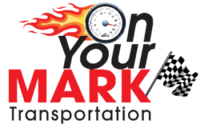Understanding the various grants programs available can be an overwhelming task. Our goal at On Your Mark Transportation is to help simplify what options are available and provide you a quick, concise overview of the grant. The CMAQ program is one such grant program.
The Federal Programs Directory and Congestion Mitigation and Air Quality (CMAQ) Improvement Program is a grant program reauthorized under the Transportation Equity Act for the 21st Century (TEA-21) in 1998 and later as part of the Safe, Accountable, Flexible, Efficient Transportation Equity Act: A Legacy for Users (SAFETEA-LU).
What is the purpose of the CMAQ program?
- The CMAQ program provides funding to invest in projects that reduce emissions from transportation-related sources. This funding can be allocated to state Departments of Transportation (DOTs), Metropolitan Planning Organizations (MPOs), and transit agencies. This funding plays a crucial role in helping urban areas meet air quality goals by encouraging projects that reduce traffic congestion and improve traffic flow.
- CMAQ supports transportation projects designed to reduce air pollution in areas that do not meet national air quality standards, known as non-attainment areas. Created by the Intermodal Surface Transportation Efficiency Act (ISTEA) in 1991, CMAQ has provided funding for more than 16,000 projects aimed at improving air quality and reducing traffic congestion. Since its inception, the program has invested $22.7 billion in projects that reduce harmful emissions from transportation-related sources.
- While the primary goal of the CMAQ program is to reduce pollutants like carbon monoxide, ozone, and particulate matter, it also contributes indirectly to the reduction of greenhouse gasses like carbon dioxide (CO2). These reductions are essential, as transportation accounts for roughly a third of the CO2 emissions in the U.S., with transportation emissions growing rapidly.
- The relationship between CMAQ and transportation energy use highlights the program’s broader impact on climate change. While air pollutants from transportation have generally declined over recent years, CO2 emissions continue to rise. By focusing on congestion relief and promoting more efficient travel options, CMAQ can help reduce fuel consumption and lower emissions from vehicles idling in traffic. This is especially important as many metropolitan areas experience increasing congestion, leading to higher emissions and longer travel delays.
- CMAQ also plays a key role in connecting non-urbanized areas to larger regional or national transit systems. This is especially important for residents in rural areas who have fewer public transportation options. The program ensures that these communities are not left behind, providing vital links through intercity bus services that meet the unique transportation needs of non-urbanized populations.
The Intercity Bus Program, under Section 5311(f), offers funding to enhance transportation options for residents in rural and non-urbanized areas. It helps bridge the gap between rural communities and larger transit networks, offering critical support to areas where public transportation infrastructure may be limited.
In conclusion, the CMAQ program remains a vital resource for reducing transportation-related air pollution, improving traffic flow, and supporting cleaner, more efficient transportation solutions in both urban and rural areas. To learn more about this and other grants available, reach out to On Your Mark Transportation today.

